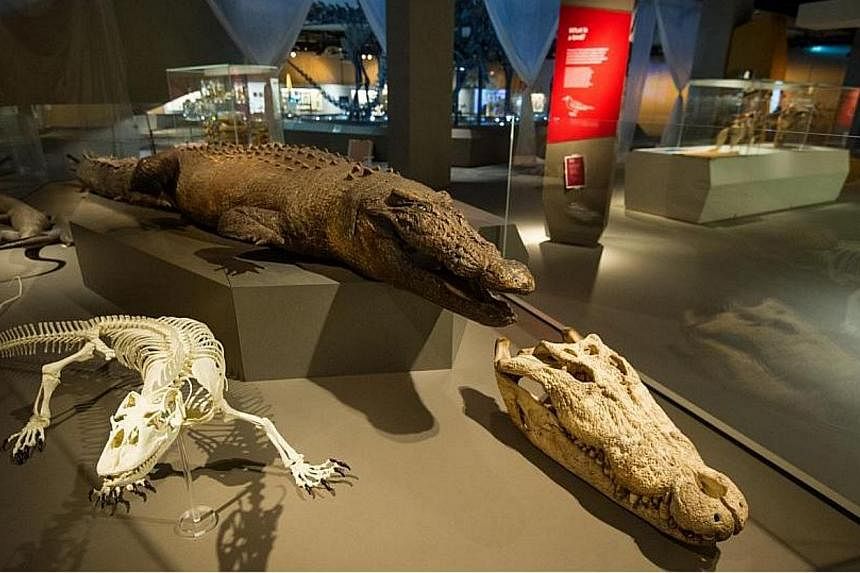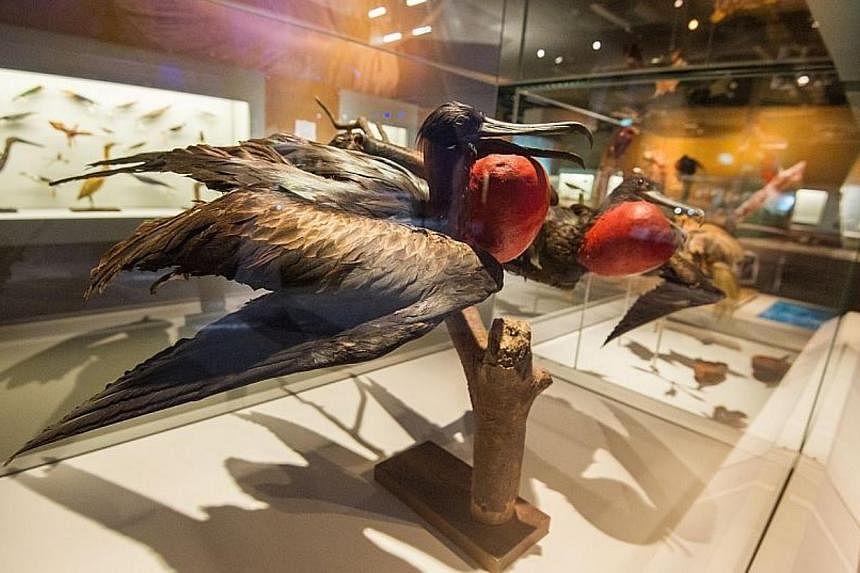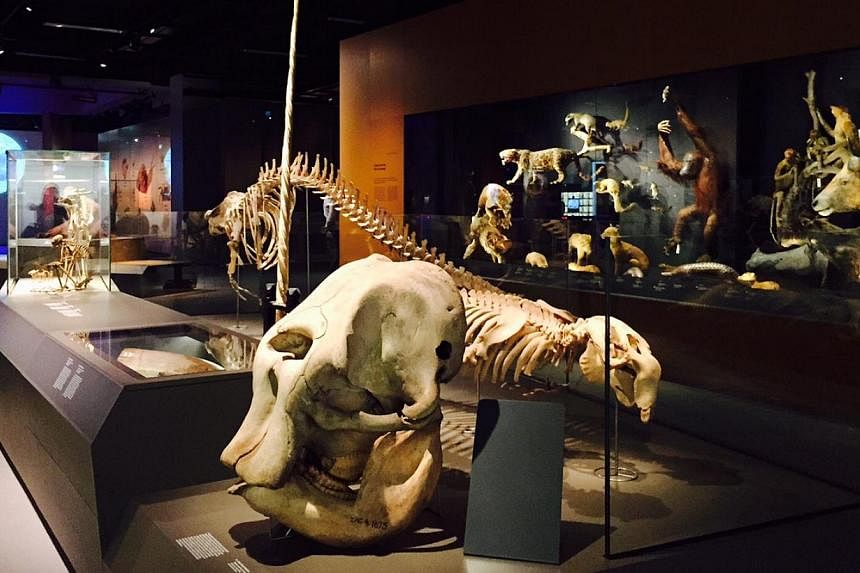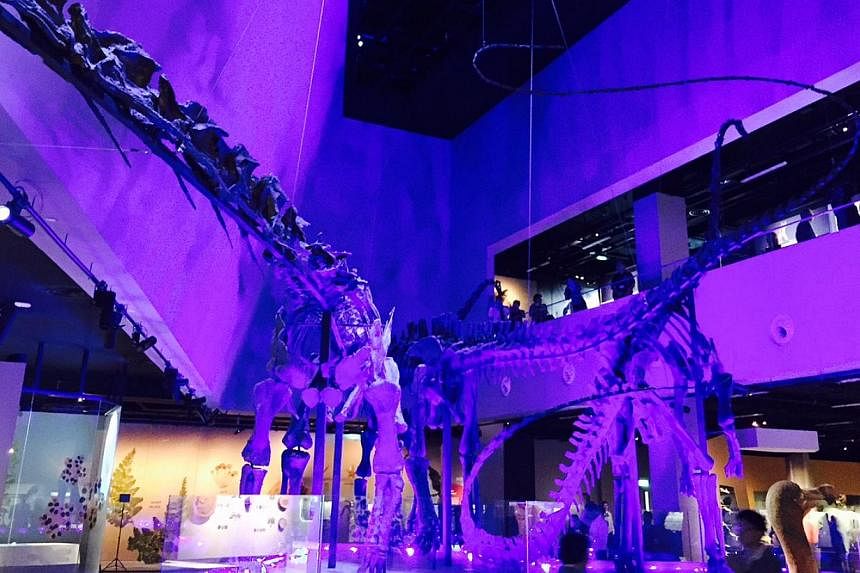SINGAPORE - The elusive stars of Singapore's first and only natural history museum were finally unveiled on Saturday morning, when the Lee Kong Chian Natural History Museum in Clementi officially opened its doors to its first group of guests.
The trio of diplodocid sauropod dinosaur skeletons - Prince, Apollonia and Twinky - played host to more than 250 guests, including President Tony Tan Keng Yam, who was guest-of-honour, Ambassador-At-Large Tommy Koh and experts from museums around the world.
The museum, which will open to the public on April 28, acquired the exhibits in 2011 from Dinosauria International, a Wyoming-based fossil company that found the remains between 2007 and 2010 in Ten Sleep, a town in the American state. The skeletons are more than 80 per cent complete - a rarity as far as dinosaur discoveries go.
Saturday's guests also toured the attraction's biodiversity and heritage galleries to see artifacts such as a komodo dragon skeleton, a tusk from a marine mammal known as the narwhal, and vibrant displays of reptiles and plants. They got a glimpse of the Asian Brown Flycatcher bird - one of the most prized possessions on show. It was collected by British naturalist Alfred Russel Wallace, the co-founder of the theory of evolution.
Aside from the 2,000sqm exhibition space, which will be open to the public from April 28 and showcase South-east Asian biodiversity, the museum will also house wet and dry research collections, and have classrooms and teaching labs for outreach activities.
In all, the Lee Kong Chian Natural History Museum is home to more than 560,000 catalogued lots of specimens, from animals to fossils, which were previously from the vaults of the former Raffles Museum. The collection dates back to 1849.
Since then, the collection has been moved from site to site - the National Museum in Stamford Road to the NUS Department of Zoology, forming the core of the Raffles Museum of Biodiversity Research. Now, the collection of more than one million specimens has finally found a permanent home in the Lee Kong Chian Natural History Museum.
The official opening of the 8,500sqm museum has brought to fruition more than five years of labour by NUS professors Leo Tan and Peter Ng, who led efforts to build such a facility and helped to raise $46 million for it in 2010.
The building fund came largely from the Lee Foundation, which gave $25 million. Resembling a moss-covered rock, the building is located next to the NUS University Cultural Centre.
Prof Ng, who now heads the museum, said in his speech: "Ouroboros (a symbol from Greek mythology) is about the cyclicity of time and endurance. It also symbolises an entity that persists from the beginning with such force and quality, it cannot be extinguished. That entity is Singapore's natural history museum."
//
Tickets can be bought from Sistic counters or online at http://www.sistic.com.sg/events/lkc2015.













